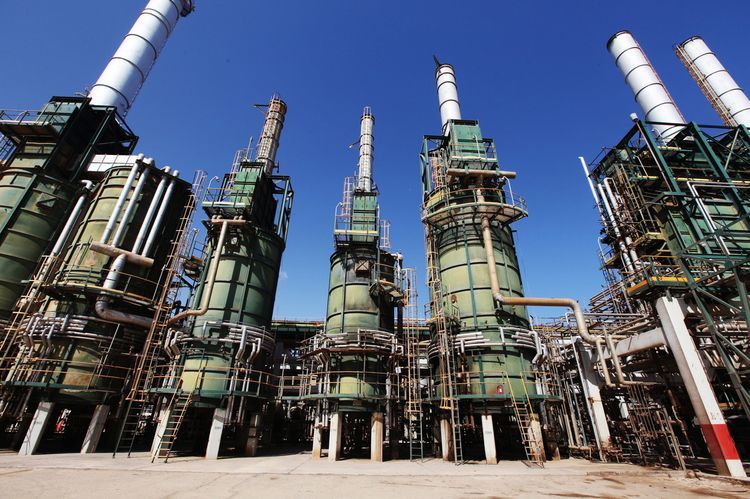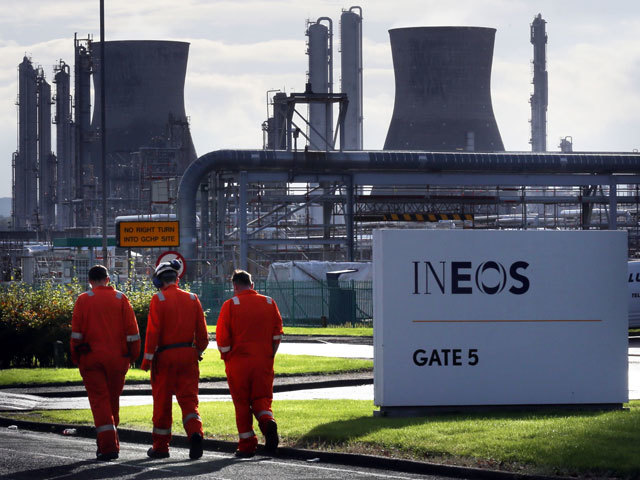
Libya’s rebounding oil output is undermining the supply curbs masterminded by Saudi Arabia and Russia. But any pleas for the OPEC member to exercise restraint will probably be resisted by the technocrat overseeing the North African nation’s turnaround.
Production has climbed to a four-year high of 1.1 million barrels a day, with Libya adding output since April that’s equivalent to more than a quarter of the cuts agreed by OPEC and its allies.
The restoration of Libyan oil supply has put the spotlight on National Oil Corp. Chairman Mustafa Sanalla, whose influence has waxed in a country divided between a weak United Nations-backed government in the west and a military strongman in the east. When OPEC meets with Russia in St. Petersburg this week, the 56-year-old petrochemical engineer will speak for a nation that’s causing as much angst as U.S. shale drillers.
“Sanalla has become the central figure in the oil and gas sector,” Geoff Porter, founder of the North Africa Risk Consulting, said in an interview. “His job is to produce as much oil as possible while he can and I think that’s what he is going to continue to try to do.”
When OPEC, Russia and other producers agreed last December to cut production to boost prices, Libya easily secured an exemption. The nation with Africa’s biggest oil reserves was pumping about half a million barrels a day of crude, less than a third of its pre-conflict capacity.
Libya was off the radar, skipping OPEC meetings and not providing the group with monthly production data. Now, with output surpassing the symbolic 1 million barrels-a-day mark, OPEC members want Libya at the table in St. Petersburg. While it’s unclear if Libya will send a representative to the ministers’ meeting on July 24, Sanalla will attend a technical meeting two days earlier.
Libya will share with the committee “the factors enabling and constraining” its recovery in output, Sanalla said in a statement on Tuesday.
Libyan Challenges
As for joining the supply curbs and while Ecuador deals a blow to OPEC unity, Sanalla has previously hinted that Libya’s challenges won’t make that easy.
“Libya’s political, humanitarian and economic situation needs to be taken into account if we are going to talk about production caps,” Sanalla said in a July 11 statement, following suggestions from other OPEC members that the country could be asked to curb output.
Sanalla’s growing stature in a divided country — General Khalifa Haftar controls eastern Libya and vies for power with the UN-backed Tripoli-based government of Prime Minister Fayez al-Serraj — was on display last month in an opinion piece in the New York Times, where he urged the NOC to remain aloof from the nation’s internal politics.
With the NYT piece and the nation’s surging oil output, Sanalla “demonstrated to the other stakeholders in Libya that he has the international standing that almost anyone else lacks,” said Mattia Toaldo, senior policy fellow at the European Council on Foreign Relations.
Power Broker
“Sanalla is a mix between a diplomat-in-chief and an oil minister in the Saudi tradition, who used to do big diplomacy mostly through oil,” Toaldo said.
Last month, Sanalla met with both Algeria’s energy and foreign affairs ministers, discussing how Algeria could help unify belligerent factions “to stabilize the country and its economy,” according to the state-owned Algerian Press Service.
Sanalla, who was born in 1961 in the eastern city of Benghazi and is today working at the NOC headquarters in the capital in the west, has sought to remain neutral through Libya’s political turmoil. After a career in state refineries, he took over the NOC leadership in May 2014. He is credited for reasserting the authority of the Tripoli-based NOC against attempts by eastern parties to sell oil independently. Under his tenure, Libya has signed contracts with international companies, ended a blockade of its ports and increased production more than fourfold from 250,000 barrels a day.
Indeed, rather than capping production, the head of the state-owned oil company is more concerned about boosting output further. When Russia’s Rosneft PJSC signed a deal in February to invest in exploration and production in Libya, the NOC said it was part of its goal to increase output to 2.1 million barrels a day by 2020.
Economic Driver
That determination to increase oil output stems from the economic hardship Libya has experienced since the state collapsed following the 2011 revolution that toppled dictator Moammar Al- Qaddafi.
The economy has contracted for the past three years, a distinction it shares only with Yemen — a country engulfed in a civil war — among 11 oil exporters tracked by the International Monetary Fund in the region spanning the Middle East, North Africa, Afghanistan and Pakistan. Libya is the only OPEC member in the Middle East and North Africa to have seen the oil price it needs to balance its budget increase since 2014.
While Sanalla has ambitions to boost production, the country may already be bumping up against a short-term “implicit” ceiling that’s slightly above 1 million barrels a day, according to Toaldo. Until investment raises capacity further, that means a cap at around that level might be possible, he said.
Labor unrest and political violence also loom over the nation’s ability to sustain output, said Porter of North Africa Risk Consulting. Much also hinges on the NOC boss himself.
“Production is exposed to a range of downside risks,” he said. “It appears that the entire sector depends on Sanalla.”
Recommended for you
